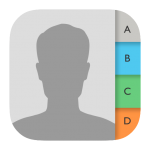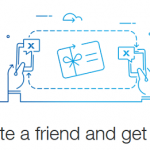How Does an NFT Work?
NFTs are recorded on a blockchain, which is a distributed public ledger that is used to record transactional information.
Like we earlier mentioned that blockchain is the underlying technique that makes cryptocurrencies possible.
Specifically, NFTs are commonly held on the Ethereum blockchain, however they can be held on other blockchains as well.
An NFT is formed, or “minted,” from digital objects that represent both tangible and intangible entities, such as the following:
- Art GIFs
- Videos and sports highlights
- Collectibles
- Virtual avatars and video game skins
- Designer sneakers
- Music
Even tweets are taken into account. Twitter co-founder Jack Dorsey sold his first ever tweet as a NFT for more than $2.9 million.
In essence, NFTs are similar to traditional collector’s artifacts, only that they are digital.
As a result, instead of receiving an actual oil painting to put on the wall, the customer receives a digital file.
They also receive exclusive ownership rights.
That’s correct: NFTs can only have one owner at a time. Because NFTs have unique data, it is simple to verify their ownership and transfer tokens between owners.
In addition, the owner or developer can keep special information within them.
Artists, for example, can sign their artwork by putting their signature in the metadata of an NFT.
What types of assets can NFT be used for?
Creating non-fungible tokens allows you to represent nearly any item, whether physical, digital, or metaphysical, with a single transaction.
The most frequent NFT assets are digital art, digital collectible goods, pieces of content such as video or music, and event tickets.
What Can be Made into an NFT?
Any type of easily reproduced digital file, such as photography, art, music, films, tweets, and even memes, can be kept as an NFT in order to distinguish it from the original copy.
You can create NFTs from nearly anything that is one-of-a-kind, this can be saved digitally, and have monetary worth.
What Are NFTs Used For?
-
NFT event tickets
Companies can use NFTs to distribute and sell tickets to events, which makes it easier to verify ownership and authenticity and reduces the risk of fraud.
There are also infinite ways to make tickets more valuable after you buy them, such as by giving you a unique experience or making them into digital art.
-
Fan/customer engagement
In order to make customers and fans more excited about a brand or organization, brands and organizations can give out and sell NFTs that are unique collectibles, products, experiences, or voting rights for the future development of a product or service.
-
In-game items
These days, people don’t own any of their digital items in video games, and secondary markets are hard to set up.
There are many ways to use NFTs to make a wide range of in-game digital items that can be bought, sold, and traded on open secondary markets.
These items can be used across a wide range of games instead of being limited to one game.
-
Digital collectibles
Collectible NFTs can be produced by organizations or individuals who have a well-defined brand and can be sold on the open market to fans or brand-loyal customers as collectibles.
Consider a corporation like Disney, which has large brands of licensed universes such as Star Wars and Marvel to its name.
-
Credentialing
NFTs can be used to make it easier for people to prove they have credentials like driver’s licenses or professional certifications like AWS’ wide range of cloud certificates.
This reduces the burden of proof for these credentials and breaks down the siloed nature of credentials today.
-
Royalties
NFTs are capable of tracking fractional ownership or royalty entitlement for a piece of media, content, or art in a digital format.
Let’s take a look at how you can purchase NFTs
How to Buy NFTs
Virtually any digital image can be purchased as an NFT.
If you’re considering purchasing one, there are a few things to keep in mind, especially if you’re a beginner.
First of all, you have to choose which marketplace you want to purchase from, which form of digital wallet you want to use to keep it, and which type of cryptocurrency you want to use to execute the transaction.
NFT marketplaces like OpenSea, Mintable, Nifty Gateway and Rarible are some of the most common out there.
Aside from that, there are also niche markets for certain types of NFTs.
However, keep an eye out for hidden charges.
In some cases, marketplaces charge a “gas” cost, which is the amount of energy necessary to perform a transaction on a distributed ledger.
Other fees may include the costs of transferring dollars into Ethereum (the cryptocurrency most commonly used to purchase NFTs), as well as the price of completing the transaction.
Popular NFT Marketplaces
As soon as you’ve completed the necessary steps to set up and fund your wallet, there’s no shortage of NFT sites to choose from.
The following are the largest NFT marketplaces at the moment:
This peer-to-peer marketplace claims to sell “rare digital products and collectibles”. To get started, simply create an account and browse the NFT collections.
You may also sort pieces by how much they are sold to find new artists.
Rarible, like OpenSea, is a democratic, open marketplace that enables artists and producers to issue and sell non-fungible tokens (NFTs).
Holders of RARI tokens issued on the platform have the ability to express their opinions on aspects such as fees and community regulations.
Artists must either earn “upvotes” or an invitation to post their work from other creators before they can do so.
Because of the community’s exclusivity and high barrier to entry (artists must also acquire “gas” in order to mint NFTs), they are likely to have higher-quality artwork.
For example, Chris Torres, the developer of the Nyan Cat, sold the NFT on the Foundation platform.
It could also result in higher pricing, which would not necessarily be a negative thing for artists and collectors looking to profit from the situation, providing that demand for NFTs continues at current levels or even increases over time.
Despite the fact that these and other platforms are home to thousands of NFT makers and collectors, it is important to conduct thorough research before making a purchase.
It has been reported that several artists have fallen prey to impersonators who have listed and sold their work without their consent.
The verification methods for creators and NFT postings are also inconsistent among platforms, with some being more rigorous than others.
NFT listings on sites like as OpenSea and Rarible, for example, are not subject to owner verification requirements.
When it comes to buying NFTs, buyer safeguards appear to be minimal at best, thus it may be advisable to remember the old adage “caveat emptor” (let the buyer beware) when shopping.
Can NFTs only be bought with Cryptocurrencies?
The cryptocurrency exchange, like the stock exchange, provides consumers with an online platform for buying, selling, and exchanging cryptocurrencies.
The legal parameters and regulatory structure that govern them are unclear.
Cryptocurrency exchanges have been a source of contention, namely in the areas of hacking and money laundering restrictions.
The goal of a regulated cryptocurrency exchange is to provide customers with a completely secure platform on which to trade cryptocurrencies.
Cryptocurrencies have emerged as a key asset in nearly every country on the planet.
Having said that, if they are here to survive in the long run, they will all require some constraints.
Enough said already, lets talk about how you can create an NFT for your self.
Click on page 6 or the next page button to continue reading!









